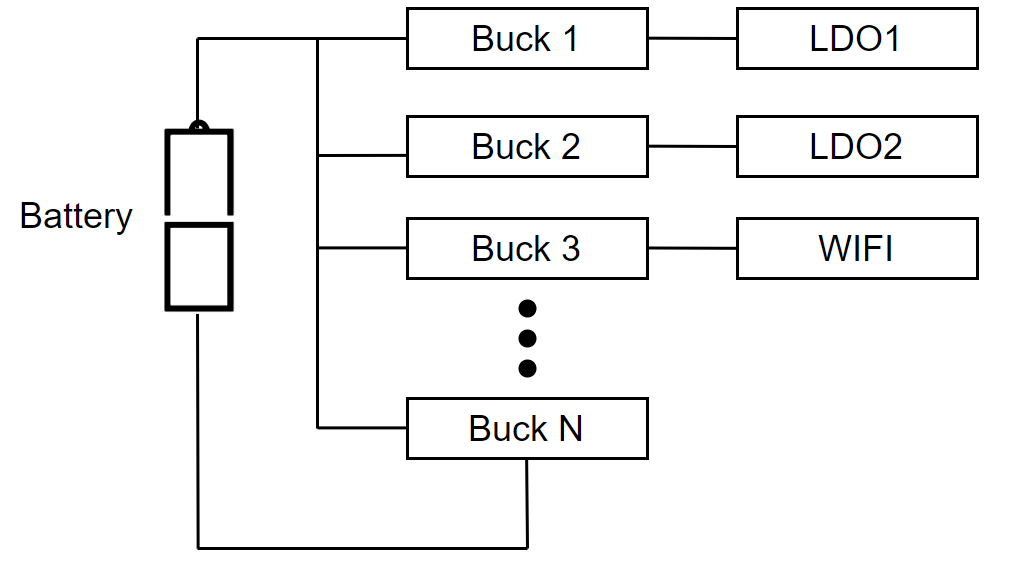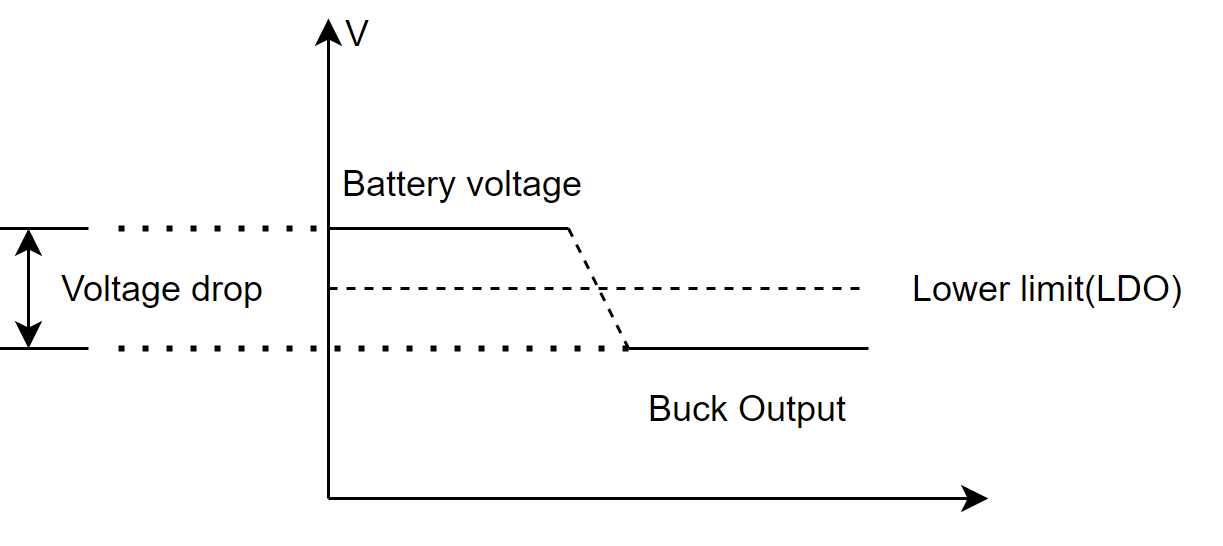SLVAFV2 June 2024 LMR51610 , TPS629210
1 Introduction
In building automation applications, such as E-Lock, doorbell, temperature and humidity sensors, all the applications that require battery power need at least one buck to create corresponding power rails to provide energy for post-stage circuits such as LDO or directly connect to the chips. Figure 1-1 shows typical power rails in battery power applications.
 Figure 1-1 Power Rails of Battery Power Application
Figure 1-1 Power Rails of Battery Power ApplicationAssuming that one buck's load is an LDO, the LDO has a lower input voltage limit to output the system required voltage. Therefore, to maintain LDO operation, the output voltage of the buck converter needs to be larger than the lower input voltage limit of the LDO. Moreover, to fully use the batter power, we need to keep the input voltage and output voltage of the buck converter sufficiently close. This means that the buck needs to have a low voltage drop. If the voltage drop of Buck converter is very large, we cannot keep LDO working even if the battery has enough power. Figure 1-2 shows this relationship.
 Figure 1-2 Voltage Relationship
Figure 1-2 Voltage RelationshipBased on the analysis, an effective way to fully use the battery is to reduce voltage drop in buck converter.